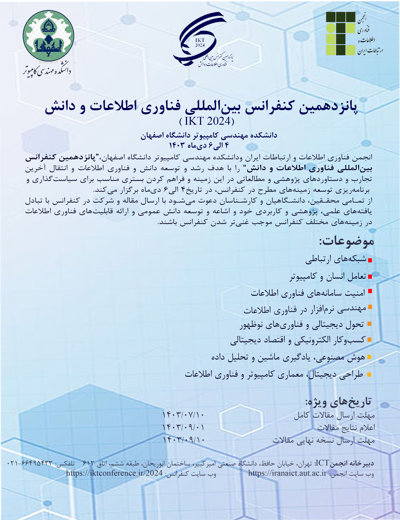0% Complete

نویسندگان :
کلمات کلیدی :
چکیده :
لیست مقالات بایگانی شده
محمد میلاد صیاد - محمد رضا بینش مروستی - سید امیر اصغری
محمدامین قسوری جهرمی - مهرداد آشتیانی - فاطمه بخشی
Vahidreza Seirafian - Masoud Omomi
Dhruvi Pancholi - Nilesh Kumar Jadav - Sudeep Tanwar - Deepak Garg - S. Mohammadali Zanjani
ٍElham Alighardash - Dr Hassan Khotanlou - Vahid Pour Amin
یوکابد امیری - حسام عمرانپور
راضیه گنجی - دکتر محسن ابراهیمی مقدم - دکتر رامین نوری نیا
Parsa Bakhtiari - Hassan Bashiri - Alireza Khalilipour - Masoud Nasiripour - Moharram Challenger
مهدیه طالب زاده - هاله امین طوسی - محمد اله بخش





